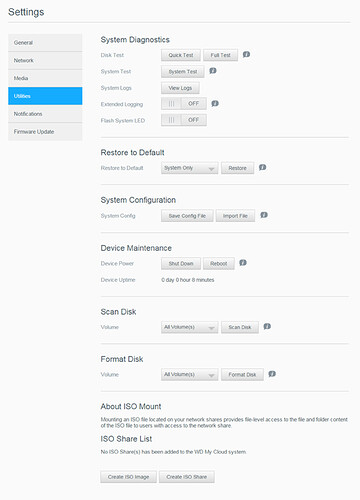Update for this continuing problem.
Per earlier instructions, i moved the fixed IP to be within the range of router DHCP assignments and set the fixed IP within router and turned off fixed IP on PR2100 (i.e. enable DHCP).
I replaced LAN cables that i tested with a LAN connection tester. The PR2100 #1 NIC is wired directly into a router port and the #2 NIC is wired to an Access Point cabled directly to a different router port. The NICs are configured as “Active Backup”.
I have two power supplies both plugged into a UPS.
I’ve updated the firmware to v5.24.108 as of 9/20/2022.
I turned on extended logging and have reviewed both logs from the PR2100 and my Router each time it drops off the network. I have noticed nothing unusual in the router logs and the only recurring message at the time of discovery of network drop is: “SAMBA. CIFS: Authentication for user [username] has FAILED.”
I have even swapped ports and cables on both the router and access point with other devices wired to them that did not drop off the network.
The power supplies are both plugged into the same UPS but if that failed my whole network would go down, which has not occurred. I do have power recovery set to “on”.
I understand when you can’t solve a problem the default answer is a 3 finger salute, or in this case reset to default config and start over, but the out of the box configuration is where I was when the problem first occurred. The only things i had done on the out of the box config was set up shares and install and load plex app and data. All the configuration changes since then have been all forum driven solutions to this dropping problem that originated with the out of the box default configuration.
Ive got 200 hours invested in plex playlist designs and resetting causing me to do that over again just to get to a state where the problem originated is not satisfactory.
I’ve got 43 devices on my network, most without redundant network connections and power supplies. I’ve had a camera here or there, or garage door controller drop offline maybe once a year or so normally caused by a firmware upgrade.
But this NAS is supposed to be designed to be up and running reliably all the time…that’s why it has two NICS, two power supplies and mirrored RAID drives…and this one device built for resiliency drops inexplicably in 4 months more than all my 42 other devices combined over the course of a year.
Really need a valid solution here. I mean think about this. The most basic thing this device is supposed to do is be available on a network all the time to access files. If it can’t stay on the network it is by definition a faulty product.

